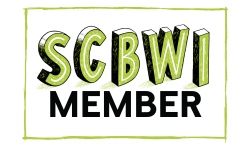So I was super excited to find Winterfrost by Michelle Houts, who lived in Denmark. It features Bettina, a 12-year-old girl and her encounters with the Nisse, elf-like creatures from Scandinavian folklore.
Synopsis
Christmas has come, and with it a sparkling white winterfrost. When Bettina’s parents are called away unexpectedly, leaving her in charge of the house, the farm, and baby Pia, Bettina neglects to set out the traditional bowl of Christmas rice pudding for the tiny nisse. No one besides her grandfather ever believed the nisse were real, so what harm could there be in forgetting this silly custom? But when baby Pia disappears, the magic of the nisse makes itself known. To find her sister and set things right, Bettina must venture into the miniature world of these usually helpful, but sometimes mischievous, folk.
(from Amazon)
My Take
1. I loved the message, which is best summed up in my favorite quote:
“The greatest good comes when we take responsibility for our mistakes.”
2. The writing style and language had an old-fashioned, whimsical feel, which really fit the story.
3. Amazing description! I really wanted to go live in the Nisse house with its cupboards for sleeping in.
4. Lots of animals played big roles in Bettina finding and rescuing her sister, like a seagull that flew her from Lolland to Askø.
5. The relationship between Bettina and her sister was so tender and sweet. I loved how the neighbors looked after each other, and the simple life of the people in this book.
6. Learning about Nisse folklore was so fun! This book felt like a warm hug—or a cup of hot cocoa on a snowy day.
Caveat: The whole time I was reading, I kept thinking I would never leave a 12-year-old home with a baby for an extended period. I’m not sure if this is a cultural thing, but it might be something to discuss during a read aloud at home or school.
Max’s take (out of a 5 bone scale)
 | |||||
| Max, the Reading Dog* |
🦴🦴🦴
Unfortunately, no dogs again! But I thought the nisse were funny, and I’d love to meet some of the farm animals.
Your Turn:
Do you like holiday books set in other countries?
What is your favorite holiday tradition?
*I will be taking a short blogging break to celebrate Christmas with my family. I'll be back with an Insecure Writer's Group post on January 7th and a new middle grade review on the 12th. Hope your holidays are filled with peace and joy!
Enjoyed this post? Never miss out on future posts by following this blog.
























